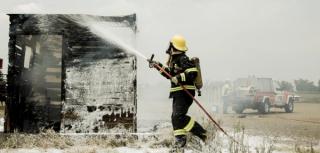AFFF emergency response activities
- Client Name
- Multiple confidential clients
- Location
- North America
- Land quality & remediation

Challenge
Per- and polyfluoroalkyl substances (PFAS) are known constituents of firefighting foams used in connection with flammable liquid fires. Despite the growing concern regarding potential impacts to human and environmental health from releases of PFAS, these foams continue to be used by the military, municipal fire departments, airports and industry in emergency response activities and in preventative fire suppression infrastructure.
Environmental criteria for PFAS continue to be developed globally with a tendency toward lower and lower targets for human health protection. While these regulatory efforts have typically focused on chemicals such as PFOS, PFOA and PFHxS, which have largely been phased out of modern AFFF formulations, there is growing focus on the PFAS which have replaced them (typically based on a six-carbon chemistry) due to their persistence, mobility and increasing evidence of environmental toxicity. Regulator involvement in some recent emergency response activities and accidental releases has confirmed that the potential impact of ‘replacement’ PFAS on the environment is a focus for these agencies.
Solution
SLR was retained to provide technical support services in relation to releases of PFAS-containing firefighting foams during both emergency response activities (i.e. fires) and other incidents (i.e. accidental discharges from fire suppression systems). SLR’s clients sought our assistance in mitigating potential impacts to the environment and navigating regulator clean-up requirements.
SLR was selected based on our extensive experience with PFAS contamination related to the use of both legacy and modern firefighting foams. SLR provided advice to our clients on immediate containment and decontamination measures; documented the extent of potentially impacted media; developed and implemented testing programs for impacted soil, groundwater, surface water, stormwater and sanitary sewer discharges; identified appropriate laboratory analytical methods for the specific AFFF to quantify PFAS precursor compounds and terminal degradation products; evaluated remedial options to reduce PFAS concentrations in site media; designed and supervised clean-up programs; liaised with regulators to obtain approval for waste disposal; monitored water treatment efficacy; collected confirmatory samples of various media following remediation and decontamination activities; and evaluated potential health risks from residual PFAS on the surrounding environment.
Impact
The immediate containment and removal of PFAS-impacted media was successful in reducing ongoing sources of PFAS contamination to the environment. Confirmatory sampling programs have demonstrated a return of PFAS levels to pre-release baseline or background conditions.